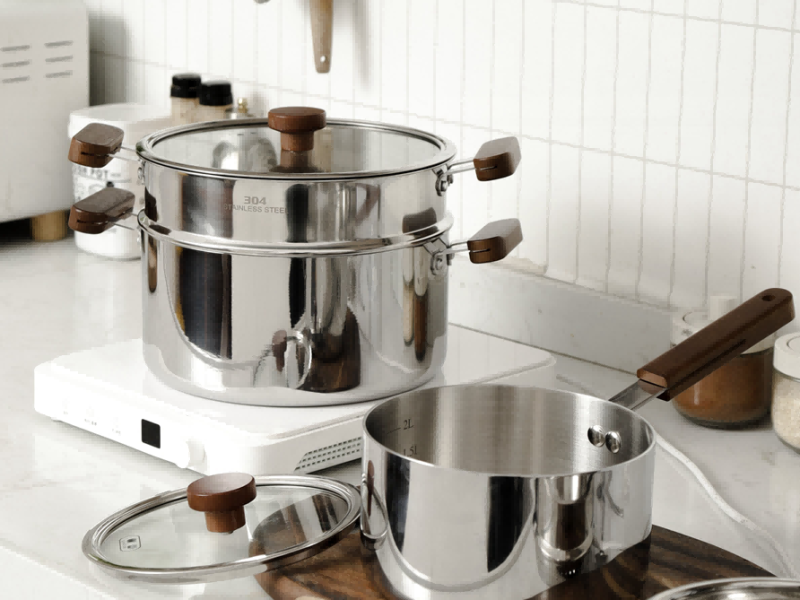
Les ustensiles de cuisine en acier inoxydable constituent un choix idéal pour les cuisines domestiques en raison de leur excellente résistance à la corrosion, aux températures élevées et à l'usure. Comparé aux casseroles en aluminium, en fer ou antiadhésives, l'acier inoxydable présente une plus grande stabilité structurelle, n'est pas facile à déformer ou à rouiller, et peut conserver ses excellentes performances pendant longtemps. En tant que professionnel Fabricant d'ustensiles de cuisine en grosJe vous invite à découvrir les avantages des ustensiles de cuisine en acier inoxydable.
Avantages uniques des ustensiles de cuisine en acier inoxydable
Excellente résistance à la corrosion
La durabilité de l'acier inoxydable est principalement due à son excellente résistance à la corrosion, qui provient de son principal composant, le chrome (Cr).
Le chrome réagit avec l'oxygène de l'air pour former un film dense d'oxyde de chrome, qui empêche efficacement l'oxydation ou la rouille à la surface du pot.
En outre, l'acier inoxydable de haute qualité (tel que l'acier inoxydable 304 ou 316) contient plus de 18% de chrome, ce qui permet de résister efficacement à la corrosion chimique courante dans le processus de cuisson, telle que l'acide, l'alcali et le sel, prolongeant ainsi la durée de vie de la casserole.
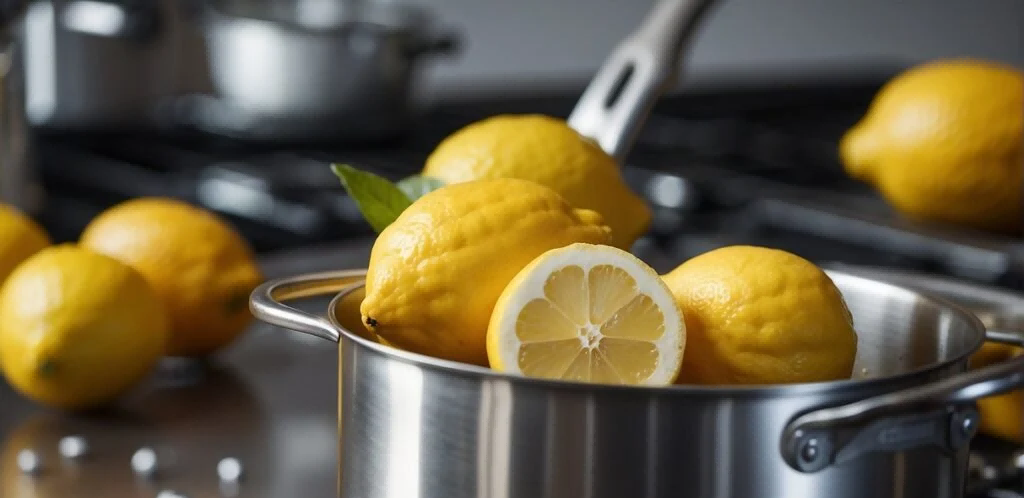
Résistance et robustesse élevées
Les éléments nickel (Ni) et carbone (C) ajoutés à l'acier inoxydable améliorent considérablement la résistance et la ténacité du matériau. L'acier inoxydable à forte teneur en nickel présente une ductilité et une résistance aux chocs plus élevées, ce qui permet d'éviter efficacement les déformations ou les ruptures.
En outre, les propriétés mécaniques de l'acier inoxydable restent stables, même dans des environnements de cuisson à haute température, ce qui garantit la fiabilité de l'utilisation à long terme.
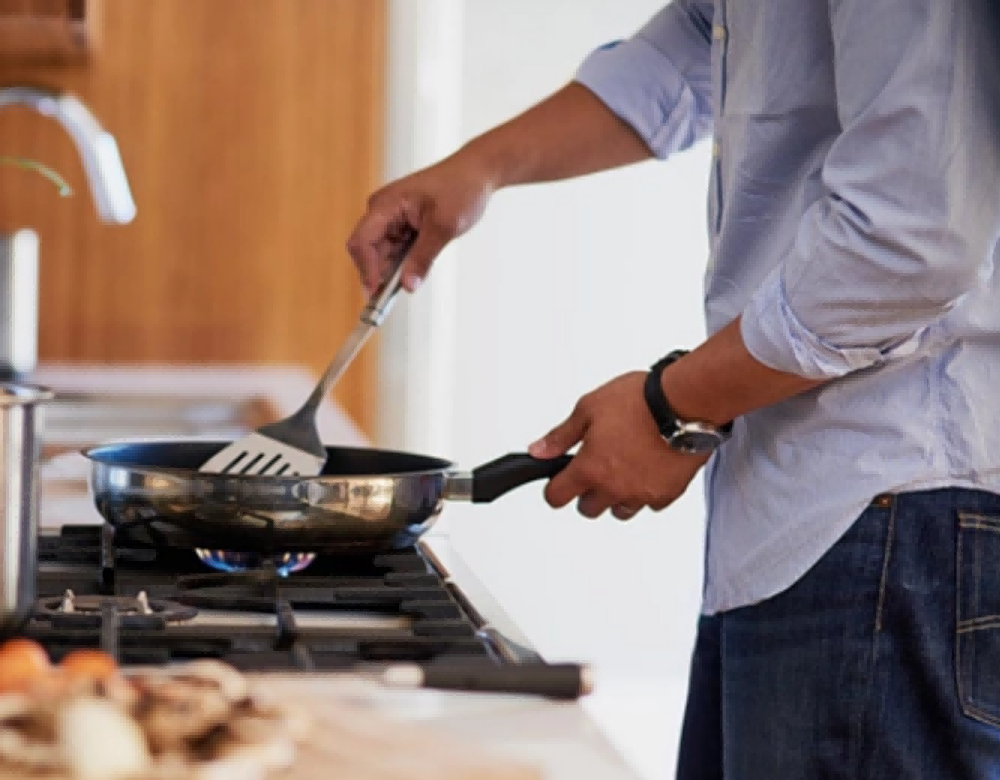
Excellente résistance aux hautes températures
Par rapport aux casseroles et poêles ordinaires, telles que les casseroles en aluminium ou les poêles à revêtement antiadhésif, l'acier inoxydable est plus stable dans le cadre d'une utilisation à long terme à haute température.
Les casseroles en aluminium et les poêles antiadhésives sont sujettes à des défaillances dues à la décomposition ou à la déformation du matériau à des températures élevées. L'acier inoxydable peut résister à des températures élevées de plus de 500°C, ce qui le rend très approprié pour une variété de méthodes de cuisson telles que la friture, les sautés et la cuisson au four.
Même lorsqu'elles sont utilisées dans des conditions extrêmes, telles que des flammes nues ou des cuisinières à induction, les casseroles et poêles en acier inoxydable ne s'abîment pas facilement, ce qui leur assure une plus longue durée de vie.
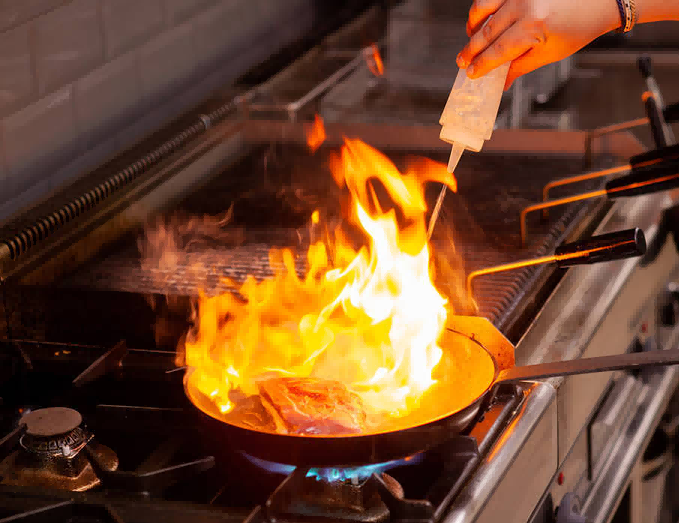
Excellente technologie de fabrication des ustensiles de cuisine modernes en acier inoxydable
Structure composite multicouche
De nombreux ustensiles de cuisine haut de gamme en acier inoxydable utilisent une structure composite multicouche, dont la plus courante est une structure à trois couches : la couche intérieure est en acier inoxydable de qualité alimentaire, la couche centrale est un noyau en aluminium à haute conductivité thermique et la couche extérieure est en acier inoxydable magnétique. Cette conception améliore non seulement la conductivité thermique de l'ustensile de cuisine, mais aussi sa résistance globale aux chocs, ce qui garantit un effet de chauffage plus uniforme et une durée de vie plus longue.
Technologie de soudage et de formage de précision
Les ustensiles de cuisine modernes en acier inoxydable sont généralement soudés sans soudure ou formés intégralement, ce qui élimine le risque de fatigue et de rupture au niveau des joints soudés. En même temps, les bords et les poignées des ustensiles de cuisine sont spécialement renforcés pour améliorer encore leur durabilité.
Traitement de surface et processus de polissage
La surface de la marmite en acier inoxydable est polie miroir ou brossée, ce qui améliore non seulement l'aspect de la texture, mais aussi la résistance aux rayures. En outre, ce procédé réduit le risque que les aliments collent au fond de la casserole, ce qui prolonge encore sa durée de vie.
Performance des ustensiles de cuisine en acier inoxydable
Les ustensiles de cuisine en acier inoxydable sont très adaptables et peuvent répondre aux besoins de presque tous les environnements de cuisine :
Flamme nue et plaque à induction
Lorsqu'il s'agit de choisir une cuisinière, les ustensiles de cuisine en acier inoxydable sont assez polyvalents. Elle possède une bonne conductivité magnétique et peut être chauffée rapidement et efficacement sur une cuisinière à induction, ce qui en fait un produit parfaitement adapté à cette dernière.
Si vous utilisez un réchaud à flamme nue à la maison, il est tout aussi performant, avec une excellente résistance aux hautes températures et ne se déforme pas facilement.
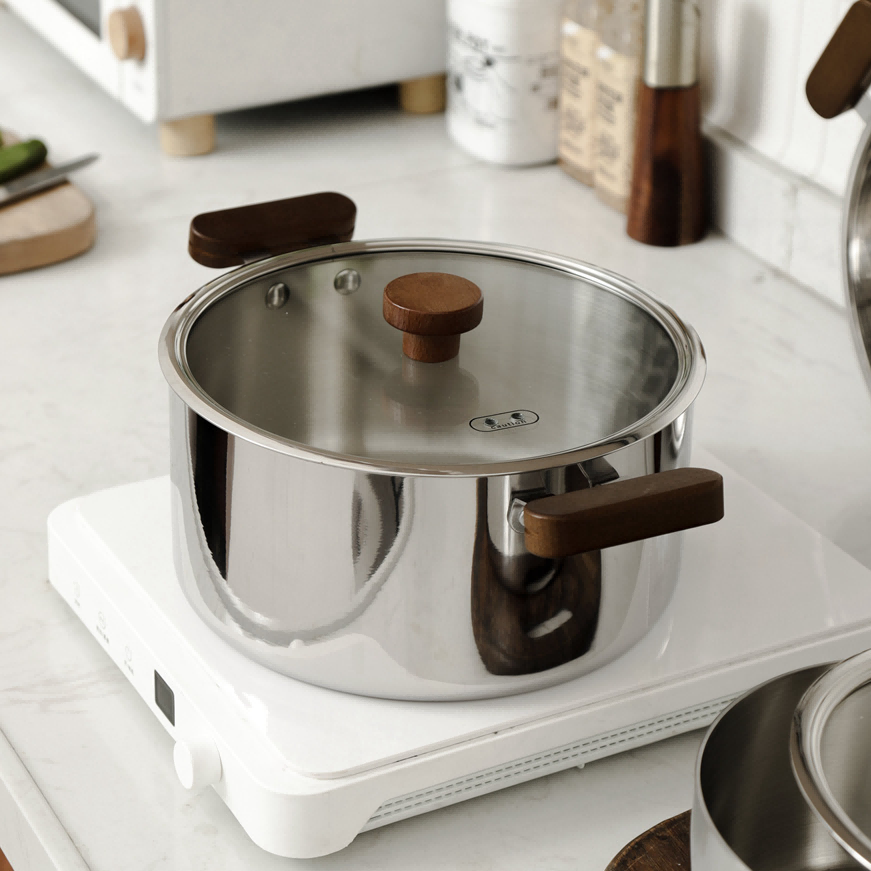
Four
Les casseroles en acier inoxydable peuvent également être mises directement au four. Contrairement aux casseroles antiadhésives ou en aluminium, l'utilisation de casseroles en acier inoxydable ne pose aucun problème de décomposition du revêtement et la poignée n'est pas endommagée par les températures élevées.
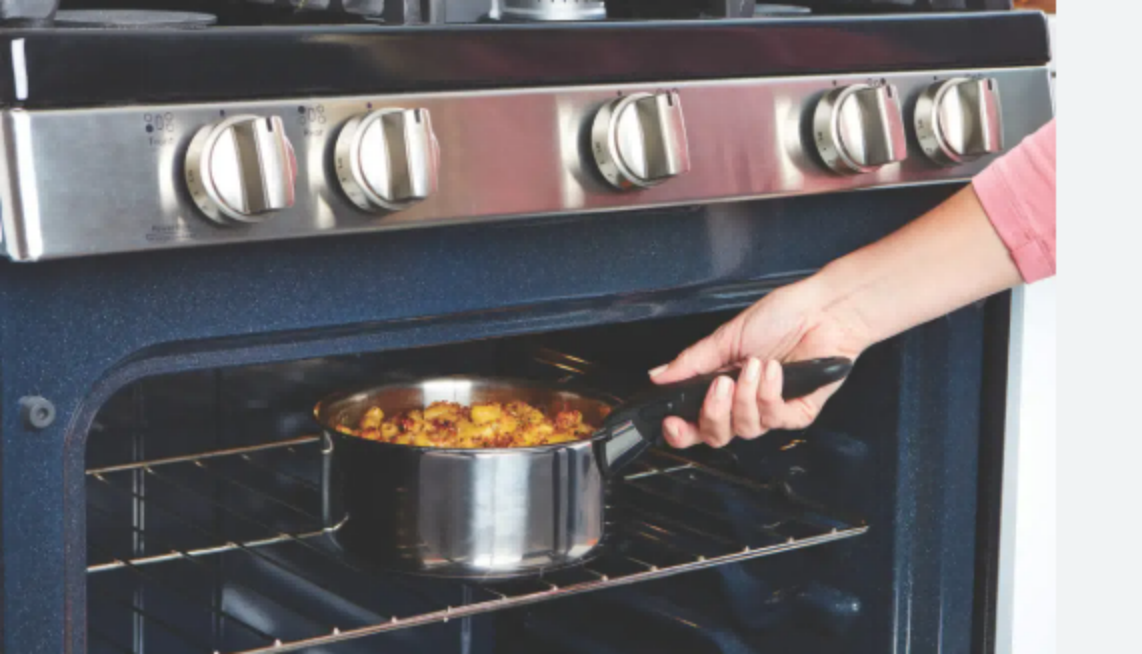
Autres environnements spéciaux
Les ustensiles de cuisine en acier inoxydable ne sont pas limités aux environnements de cuisson ordinaires. Ils peuvent également être utilisés dans des environnements humides ou à forte teneur en sel et ne se corrodent pas facilement. Ils sont particulièrement adaptés à la cuisson des fruits de mer ou au traitement des aliments marinés.
Batteries de cuisine en acier inoxydable vs. autres batteries de cuisine
| Fonctionnalité | ustensiles de cuisine en acier inoxydable | Batterie de cuisine ordinaire en aluminium | ustensiles de cuisine antiadhésifs |
| Résistance à la corrosion | Excellent | Faible | Moyenne |
| Résistance aux températures élevées | Excellent | Moyenne | Susceptible d'être endommagé |
| Durée de vie | Longue durée (10+ ans) | Court (2-5 ans) | Court (jeté après le décollement du revêtement) |
| Santé et sécurité | Élevée (pas de revêtement, pas de lixiviation chimique) | Juste | Le revêtement peut se décoller |
| Polyvalence de la cuisson | Tous azimuts | Limitée | Limitée |
Résumé : Pourquoi les ustensiles de cuisine en acier inoxydable valent-ils la peine d'être choisis ?
La durabilité des ustensiles de cuisine en acier inoxydable découle des excellentes propriétés de ses matériaux et de son processus de fabrication avancé, tout en offrant de bonnes performances en utilisation réelle, sans presque aucun inconvénient évident. Bien que le coût d'achat initial soit plus élevé, sa longue durée de vie et ses performances stables en font un choix économique et respectueux de l'environnement.
Si vous recherchez un ustensile de cuisine durable, sain, sûr et performant, la batterie de cuisine en acier inoxydable est sans aucun doute le meilleur investissement pour votre cuisine !